Top Colonoscopy Devices from Olympus, Fujinon, and Pentax: Expert Picks
October 3, 2025 2025-10-03 14:28Top Colonoscopy Devices from Olympus, Fujinon, and Pentax: Expert Picks
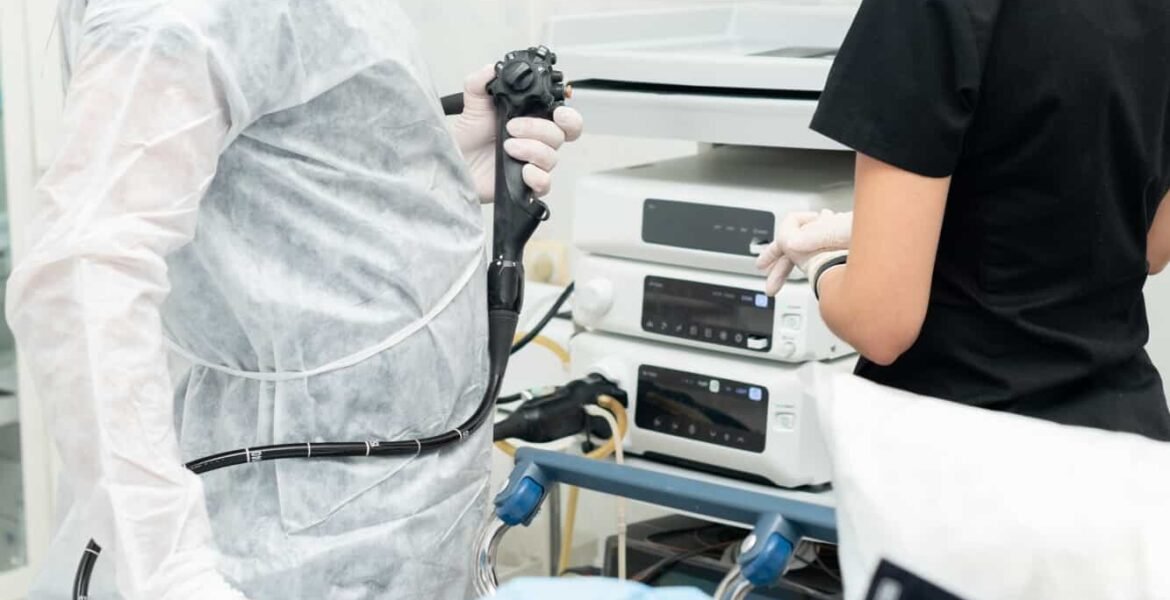
Top Colonoscopy Devices from Olympus, Fujinon, and Pentax: Expert Picks
A colonoscopy is a medical procedure to examine the inside of the large intestine (colon and rectum). This procedure is the gold standard for colorectal cancer screening and prevention. However, it remains an imperfect modality, and efforts have been made to enhance the quality of colonoscopy.
In 2025, medical devices and visualization systems are undergoing rapid evolution. The tools that gastroenterologists use today are essential.
They aid in accurate diagnoses and enhance patient comfort. These tools also make procedures more efficient and help control long-term costs. This is why choosing the right colonoscopy devices for your practice or clinic is essential.
The colonoscopy devices market is growing steadily. This growth is expected to continue in the years to come. It is driven by the rising demand for minimally invasive procedures.
The increase in colorectal cancer cases also plays a role. More people are becoming aware of genetic conditions, such as Lynch syndrome. Chronic diseases such as Crohn’s disease and ulcerative colitis are also factors.
The best devices are now being replaced. Newer imaging tools and video colonoscopes are better. These new tools can detect more lesions, integrate seamlessly with electronic records, and meet the demanding needs of high-volume practices.
For hospitals, surgery centers, and private gastroenterology practices, selecting a colonoscope is crucial for both patient care and financial success. High-definition imaging helps find more polyps. The design of the scope also affects how well specialists can do long procedures.
There are other factors to consider, but the numerous devices and great sale offers make it challenging to choose the right model. The aim of this guide is to provide you with information and help you make an informed purchasing decision.
We will examine the best colonoscopy devices from Olympus, Fujifilm, and Pentax. We will highlight the important models and features for 2025. This will help you find the right solution for your workflow, patient needs, and budget.
Why Upgrading Your Colonoscopy Devices Matters in 2025
Gastroenterology has long been associated with advancements in new imaging technology. In 2025, the benefits of upgraded colonoscopy systems are clearer than ever.
High-definition imaging and advanced visualization modes are now crucial. They help improve adenoma detection rates. They also help identify subtle polyps and early lesions that older systems might have missed.
This is very important because colorectal cancer rates are rising around the world. Prevention relies heavily on early detection. Having equipment that captures and shows clearer images in real-time helps clinics improve patient outcomes.
Workflow efficiency is another important factor. Modern colonoscopes are made for faster image processing. They also have better durability. These improvements allow practices to perform more procedures per day without compromising on infection control standards.
The newer devices are easier to clean. They also have faster turnaround times. This helps clinicians see more patients with fewer delays.
This directly relates to the revenue hospitals, surgical centers, and private practices can generate. It also helps reduce wait times for patients.
Patient experience is a crucial component of the equation. Newer systems focus on flexible options and insertion technology.
This technology reduces discomfort. As a result, more people are likely to follow colon cancer screening programs. When patients feel less worried about pain, they are more likely to return for follow-ups and adhere to preventive care.
Technological advancements, including enhanced imaging, artificial intelligence (AI), and advanced data processing, help reduce administrative tasks while facilitating seamless integration with various systems. With better service, strong warranty options, and proven reliability, you can ensure long-term value. This is particularly important in healthcare, where both clinical and financial performance are crucial.
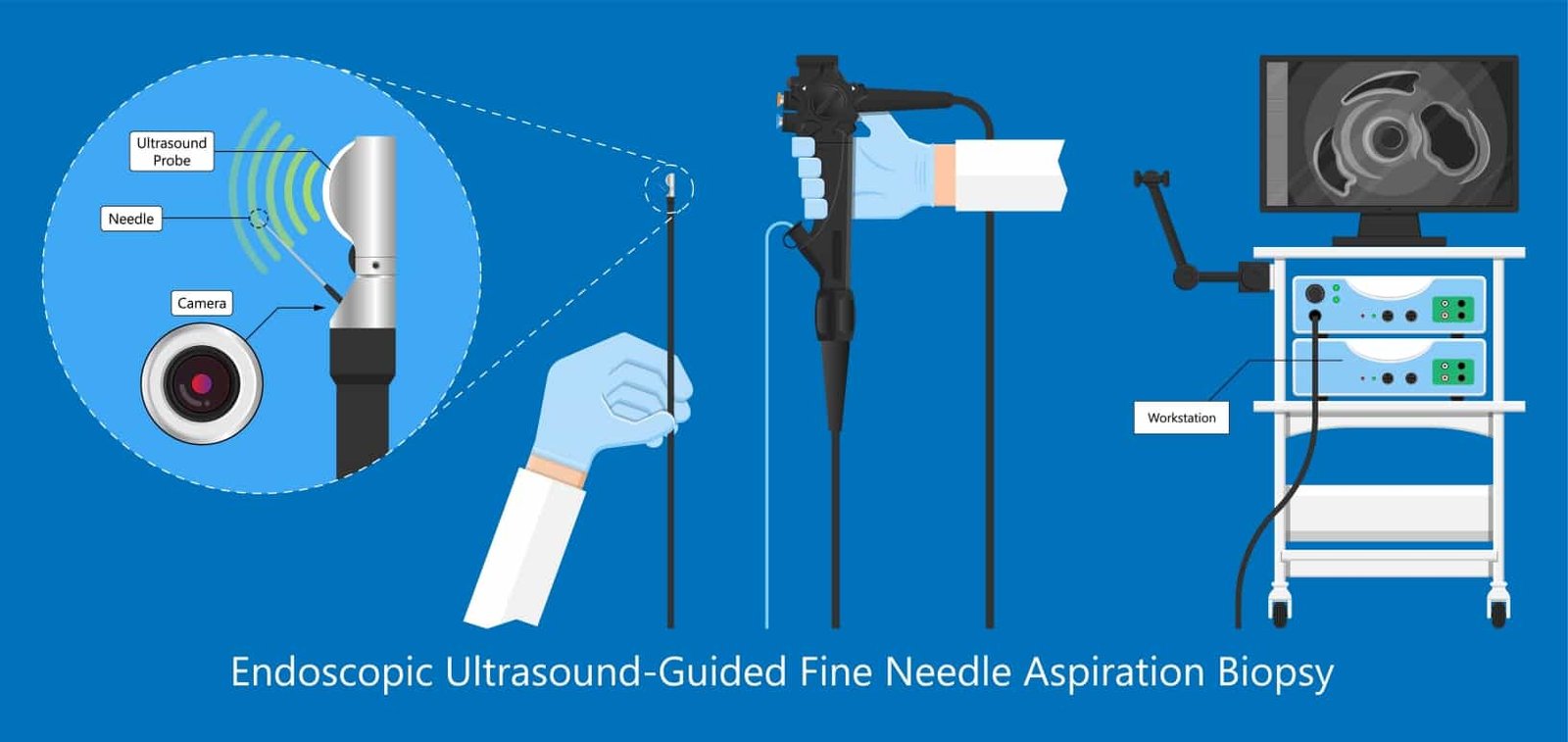
Key Factors for Selecting a Colonoscopy Device.
Choosing the right colonoscopy Devices means balancing their technical features with practical needs. Imaging performance is the most important technical factor you should not overlook.
Here are key factors to consider when selecting a colonoscopy system:
- Imaging performance: Systems that provide full high-definition output and better visualization modes can significantly improve mucosal visualization and polyp detection. Examples include Olympus’ Narrow Band Imaging (NBI), Fujinon’s Blue Light Imaging (BLI), and Linked Color Imaging (LCI).
This is very important. Even small differences in resolution and scan data can greatly affect diagnostic accuracy. This makes imaging performance a key factor in the selection process.
- Scope ergonomics: Scope ergonomics and maneuverability are also essential factors. Colonoscopy procedures usually take over 30 minutes. The scope is handled differently depending on the operator’s fatigue and efficiency. Advances in insertion technology, torque responsiveness, and lightweight design not only improve clinician comfort but also reduce patient discomfort.
- Compatibility: Compatibility is one of those features that are often overlooked, but it’s actually quite important. Many practices seek upgrades that integrate seamlessly with their existing systems. This helps them avoid expensive changes to their existing medical setups. Backwards compatibility, as well as compatibility with existing processors and supporting equipment, prevents workflow disruptions while still ensuring consistent image quality.
- Infection control and reprocessing efficiency remain front-line concerns. Automate reprocessing compatibility, removable distal ends, and water-resistant designs to reduce the risk of cross-contamination and infection. Faster reprocessing also enables a faster turnaround between cases, which is particularly beneficial for facilities with high patient volumes.
- Support: Making a good purchasing decision isn’t just about hardware specifications. While those are, admittedly, the most important factors, you should also look into serviceability, warranty, and training availability.
Manufacturers with robust service networks and strong warranties reduce the risk of prolonged downtime. This helps protect your investment. Training programs ensure that your staff utilizes the new system’s features effectively, maximizing its value.
- Price: Price can be a dealbreaker. Buyers often have to choose between a brand-new system and a refurbished one. New models have the latest technology.
However, refurbished systems are still a smart choice. They are a good option, especially if they are certified and well-serviced. Refurbished systems can save you money without losing safety or performance.
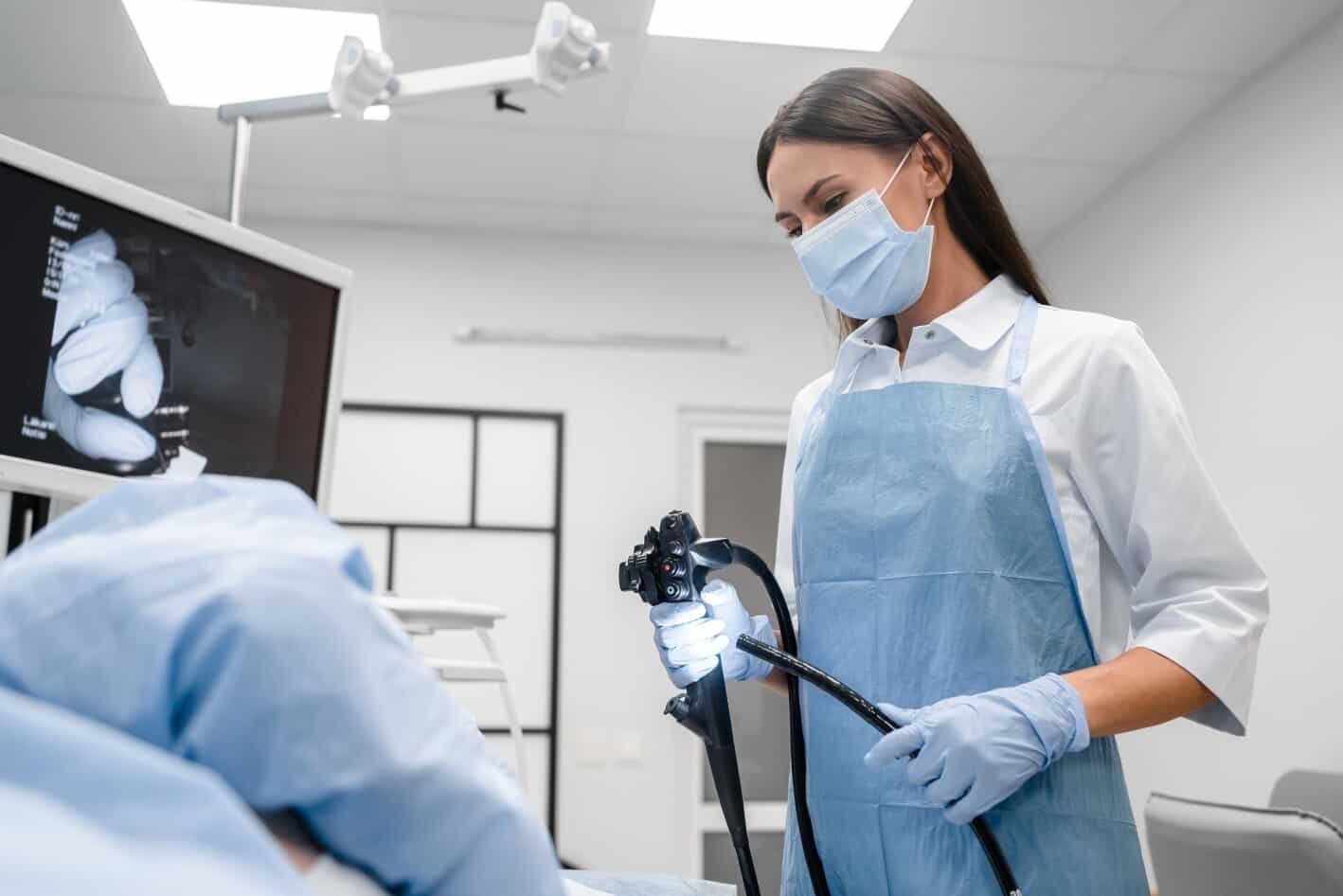
Olympus Colonoscopy Systems: The Gold Standard
Olympus Corporation, Japan’s manufacturer of optics and reprography products, has been a key player in gastrointestinal endoscopy for decades. In 2025, not much has changed. The company remains the leader in the colonoscopy device market. Their systems offer excellent image quality, advanced visualization, and strong service support.
Here’s a breakdown of their most prominent models.
1. Olympus CV-190 Processor ($8,999.00)
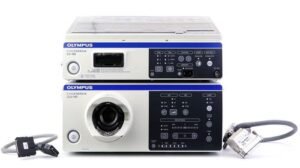
The CV-190 is one of the most trusted processors used in clinics. It offers high-definition imaging for many compatible scopes. One of its key features is Narrow Band Imaging (NBI) technology.
This technology uses filtered light to show more detail in blood vessels and tissue. It helps make lesions easier to see. The processor works with various Olympus scopes. This makes it a smart choice for institutions that want to standardize their procedure rooms.
2. Olympus PCF-PH190L Colonoscope ($9,999.00)
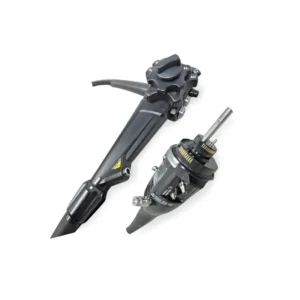
The Olympus PCF-HQ190L has a smaller insertion tube. This makes it great for navigating complex anatomy.
It is also good for procedures in narrower colons. This feature makes it perfect for pediatric use. Yet, despite its smaller size, the device maintains strong imaging capabilities, and many users regard it highly for its maneuverability.
3. Olympus CF-HQ190L Colonoscope ($9,876.00)
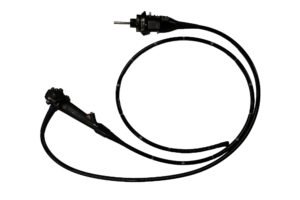
The CF-HQ190L is one of Olympus’s top colonoscopes. It provides full high-definition imaging and has responsive insertion technology. The device is commonly used for both screening and treatment.
Its good image quality and comfort make it a top choice for gastroenterologists. They value efficiency and trust in their diagnoses. Additionally, its design enables smoother navigation and reduces loop formation, which positively impacts patient comfort.
4. Olympus GIF-HQ290 ($5,555.00)
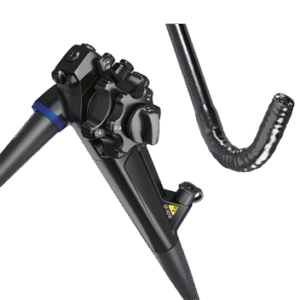
The GIF-HQ290 is a type of gastroscope. It is often included in GI suite planning. This is due to its high-definition imaging and advanced insertion technology.
Many practices invest in various Olympus devices. They often choose this model because it works well in upper GI procedures.
5. Olympus GF-UCT180 ($16,999.00)
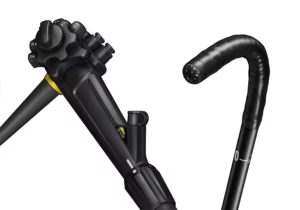
The GF-UCT180 is an advanced endoscopic ultrasound system from Olympus. It offers high-quality imaging for complex diagnostic and staging procedures beyond the colon. For multi-specialty centers, adding EUS capabilities enables the provision of additional services. This includes cancer staging and interventional endoscopy.
Fujinon (Fujifilm): Balancing Innovation and Value
Fujinon, part of Fujifilm Holdings Corporation, has grown in the GI endoscopy market. They combine new imaging technologies with strong engineering and cost-efficiency. Olympus still has the largest market share.
However, Fujinon is becoming a popular choice for users. This includes healthcare providers who want modern features at better prices.
1. Fujinon VP-7000 Processor ($8,500.00)
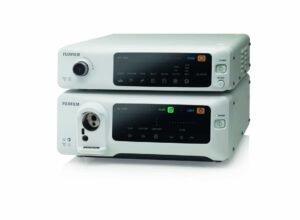
The Fujinon VP-7000 Processor is key to Fujinon’s endoscopy system. It has a strong LED light source. This light improves visibility and reduces the frequency of bulb replacements.
It supports advanced imaging methods like BLI, LCI, and Flexible Spectral Imaging Color Enhancement (FICE). These methods help endoscopists enhance mucosal contrast and visualize vascular patterns during endoscopic scans.
2. FUJIFILM EC-760R-V/L Colonoscope ($7,500.00)
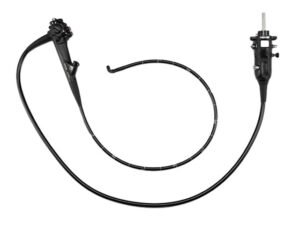
The EC-760R-V/L is one of Fujinon’s most advanced colonoscopes, equipped with multi-light that includes LCI, BLI, and FICE. It has a 170° field of view. This helps gastroenterologists view a greater portion of the colonic wall in a single pass. It improves adenoma detection and reduces blind spots.
New vs. Refurbished Systems: What’s Right for You?
Buying a brand-new system is often not affordable, especially for facilities with a tight budget. Sourcing refurbished options responsibly can provide significant savings without losing clinical performance.
New systems from Olympus, Fujinon, and Pentax typically include the most advanced imaging features, enhanced visualization modes, improved scope ergonomics, and faster reprocessing compatibility. They also feature full manufacturer warranties and uptime assurance, factory-certified servicing, and long-term support.
Admittedly, the upfront investment costs are quite high, but the options, as mentioned earlier, often outweigh the higher investment costs. Clinics and small practices with limited budgets should consider refurbished systems, especially if they hold certification.
Certification ensures that a qualified individual carefully inspects, repairs, and tests refurbished units to ensure they meet high standards. This ensures they meet the same safety and performance standards as new devices.
Reputable resellers offer detailed service histories and warranties. In some cases, they also provide upgrade options. These upgrades can extend the equipment’s functional life.
This can save money for procurement teams. However, quality assurance is important for refurbished units. Buyers should check for FDA or CE certifications. They should also confirm that they have fully serviced and tested all components.
Ultimately, the decision between a new and a refurbished unit comes down to balancing finances with clinical requirements. Larger hospitals often prefer new systems to protect their investments.
In contrast, private practices and community clinics often choose refurbished units. They do this because refurbished units offer good performance, safety, and lower prices. Most resellers stock both options, catering to the diverse needs of their buyers.
Comparison Table: Olympus vs. Fujinon vs. Pentax
| Feature | Olympus CV-190 | Fujinon VP-7000 | Pentax EC3980Li |
| Imaging technology | Full HD + NBI | Full HD + LCI/NBI/FICE | Full HD |
| Field of View | 140°-170° (model dependent) | 170° | 140° |
| Processor Compatibility | Wide, across Olympus scopes | Limited, but growing fast | Moderate, primarily Pentax |
| Reprocessing Efficiency | High, supports automated reprocessing | Moderate, some automated support | High, streamlined workflows |
| Cost Range (New/Refurbished) | $$$/$$ | $$/$ | $$/$ |
| Support Availability | High, global service network | Moderate, smaller network | Moderate, smaller network |
| Best Use Case | High-volume GI centers, multi-specialty hospitals | Mid-sized hospitals, balanced cost and performance | Clinics and practices are seeking cost savings and reliability. |
This table comparison shows that each brand targets a distinct market segment, with Olympus offering top-tier performance, Fujinon focusing on balanced innovation, and Pentax emphasizing cost-effectiveness. As previously mentioned, the choice depends on patient volume, available finances, and the service infrastructure of your facility.
Recommendations by Practice Type
The decision to buy a colonoscopy system depends on several factors. It is essential to find a device that aligns with the practice’s workflow. Budget and patient needs are also key considerations.
Brand loyalty is less important in this choice. Olympus, Fujinon, and Pentax each have their own strengths. The best option depends on factors such as price, the method of purchase, and the type of practice.
Individual practitioners and GI specialists often prioritize imaging clarity, scope maneuverability, and patient comfort. Olympus’s CF-HQ190L is frequently seen as the standard for screening and treatment. It features full HD resolution, responsive insertion technology, and is compatible with the CV-109 processor.
Hospitals, on the other hand, typically require scalability, service reliability, and strong warranty support. The Olympus CV-190 processor is compatible with a suitable scope.
Busy centers often choose it. This is because it integrates easily in many procedure rooms and supports a wide range of accessories. Fujinon’s VP-7000 processor is also appealing to hospitals due to its combination of affordable pricing and performance.
Budget-friendly clinics might find new Olympus or Fujinon systems too expensive. In this case, Pentax systems are good options. The EC-3890Fi2 and EC-3890Li models offer reliable HD imaging at a lower price.
Certified Pentax and Fujinon models can help save money. They also offer a significant upgrade in imaging quality. This is great for clinics that focus on routine screenings and have moderate patient volumes.
Invest in Better Imaging and Better Outcomes
The technology for colonoscopies has undergone significant improvements. Selecting the right system can significantly impact patient outcomes and workflow efficiency. It can also affect long-term return on investment.
But choosing the right endoscopy device for your practice can be overwhelming. If you would like to upgrade, please don’t hesitate to contact us. Our team of experts will help you find the best model for your practice.




